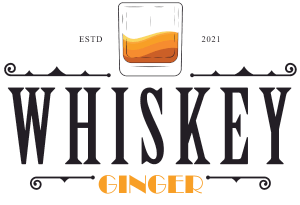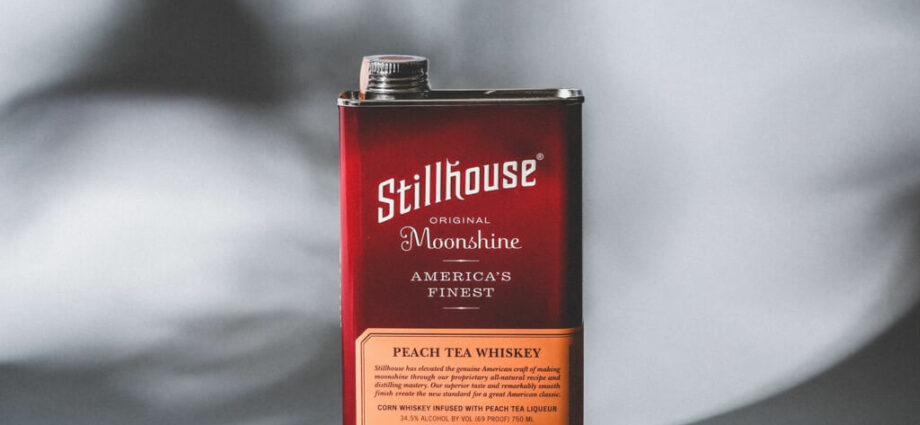Moonshine, an illicitly produced and distributed spirit, is renowned for its high alcohol concentration and robust flavor. In this comprehensive guide, we’ll explore the intriguing world of moonshine, its history, production methods, and the critical question: how much alcohol is in moonshine?
Moonshine has been an integral part of the United States since its infancy, steeped in legends and adventure. During the 18th and 19th centuries, rural farmers often distilled their spirits, primarily using maize as the key ingredient. Two driving forces fueled this practice: the logistical challenges of transporting crops to market and the need to make the most of surplus grains. The era of Prohibition, spanning from 1920 to 1933, witnessed a significant rise in moonshine production. Americans turned to moonshine as a source of solace during this time when alcohol production and sale were banned. These clandestinely made spirits were typically more potent than their legally available counterparts.
In 1791, the government introduced a levy on domestically produced alcoholic beverages, popularly known as the “whiskey tax,” with the intent of curbing the production of illicit distilled spirits. This led to the Whiskey Rebellion in western Pennsylvania, which was ultimately quelled by federal authorities. Despite its prohibition in many countries for decades, some regions, particularly in the American South, continue to relish moonshine. Today, moonshine production typically involves a mixture of water, sugar, and corn, resulting in a highly alcoholic concoction. While legal production exists in certain areas, moonshine remains predominantly associated with illicit operations like bootlegging.
Methods for Making Moonshine
Legal moonshine production is possible with the right permits, but illicit production has historically dominated the scene. The production of moonshine involves three main processes: fermentation, distillation, and aging.
The process of moonshine begins with fermentation, where yeast works its magic by converting sugar into alcohol. Sugar can be sourced from various foods, such as fruit, corn, wheat, or barley. The fermentation process typically spans from a few days to several weeks, allowing the yeast to work its transformative powers on the sugar mixture.
Following fermentation, distillation takes center stage to create moonshine. This process involves subjecting the fermented mixture to high temperatures, causing the alcohol to evaporate. The collected vapor is then cooled, condensing it back into a liquid form. To further enhance its alcoholic potency, the liquid is collected and distilled once again. Moonshine is technically ready to be consumed once distilled, but many producers opt to age it for improved flavor and smoothness. Aging often involves storing moonshine in oak barrels for several months to years. This aging process imparts subtlety and nuance to the flavor of the moonshine.
The Alcohol Content Conundrum
Moonshine, often characterized by its transparent and unaged nature, primarily stems from maize mash. Several factors influence the alcohol concentration of moonshine, leading to significant variation.
The alcohol percentage of moonshine can fluctuate due to different distillation temperatures and aging durations. On average, moonshine boasts an alcohol by volume (ABV) of around 40%, but it can range from 60% to 80%. This wide variance is largely attributed to the often inexperienced hands involved in its production, occasionally resulting in dangerously high alcohol levels.
To ascertain the alcohol content of moonshine, a hydrometer is the go-to tool. Measuring gravity with a hydrometer involves using a fractional number, such as 1.050. Determining the alcohol by volume (ABV) or proof requires applying a specific formula: (Initial Gravity – Final Gravity) times 131.25. Consuming highly alcoholic moonshine can be perilous. While most licensed distilleries aim for a 40% ABV moonshine, illicit operations can be less cautious. According to Tasting Table, some “soft” moonshines are as potent as vodka. Under US law, moonshine cannot exceed 80% ABV, nor can it be bottled with an ABV higher than 62.5%. Excessive consumption of high-proof moonshine can lead to alcohol poisoning, a potentially fatal outcome.
The Legalities Around Moonshine Production
The production of moonshine is illegal in many nations, with oversight falling under the purview of the ATF and the IRS in the United States. Moonshine production is considered unlawful due to its exemption from the same taxes and regulations as commercially manufactured alcohol. It is often associated with subpar conditions and the presence of harmful contaminants, posing a significant risk of alcohol poisoning to those who consume it.
In the eyes of US law, moonshine encompasses any distilled spirit illicitly produced, sold, or distributed. Moonshine typically requires a higher proof than commercially manufactured spirits, although the specific requirements may vary by state. While state laws and TTB standards do apply to moonshine, there is no federal law establishing exact legal proof. Engaging in the production and sale of moonshine carries severe legal consequences. As reported by FindLaw, moonshine production can result in a maximum punishment of $10,000 and a maximum prison sentence of five years. Possessing illicit alcoholic beverages can lead to a maximum jail term of five years and a fine of $5,000. Distributors and manufacturers of moonshine may incur fines from both federal and state authorities.
Frequently Asked Questions
How high may the alcohol content of moonshine be?
The legal limit for alcohol by volume (ABV) in American moonshine is 80%. However, the precise alcohol concentration depends on the distillation process. Commercially available bottled moonshine typically falls between 60% and 62% ABV, with some varieties as low as 30% ABV.
Which moonshine flavors are most often ordered?
Moonshine comes in various flavors, with cherry, apple pie, peach, and blackberry being among the most popular. Bacon, honey, cinnamon, and other unique flavors are also available to cater to diverse preferences.
How much alcohol does moonshine usually contain?
Moonshine can boast an alcohol by volume (ABV) ranging from 60% to 80%, with an average of approximately 40%. Due to its unregulated production, the alcohol content of moonshine can vary significantly, occasionally reaching dangerous levels. It is advisable to consume moonshine with caution and in moderation.
Moonshine, what is it made of?
Typically, moonshine is made from grain mixtures like maize, wheat, or barley, which undergo fermentation and distillation. Some moonshine recipes incorporate fruit or other flavorings for added complexity and taste.
When it comes to moonshine, how much does it typically cost?
The price of moonshine varies depending on factors such as brand, flavor, and alcohol concentration. A bottle of moonshine from a specific brand can range from $20 to $100 or more. It’s crucial to ensure the moonshine you purchase is safe and of high quality by obtaining it from a reputable vendor.
Facts About Moonshine’s Alcohol Percentage
- One of the intriguing aspects of moonshine is its inherent variability. Unlike mass-produced liquors with consistent alcohol content, homemade moonshine can exhibit considerable batch-to-batch variations. Factors like temperature fluctuations during distillation and variations in raw materials contribute to this uniqueness.
- The alcohol percentage of moonshine is highly dependent on the type of equipment used during distillation. Small-scale homemade setups, often cobbled together by enthusiasts, may lack precise temperature control mechanisms. This can result in fluctuations in alcohol content from one distillation run to another.
- The skill of the moonshiner plays a crucial role in determining the alcohol percentage. An experienced moonshiner can better control the distillation process to produce moonshine with consistent alcohol content, while novices may struggle to achieve the desired results.
- Moonshine’s alcohol content can be influenced by the addition of water. Some moonshiners dilute their product to achieve a specific desired proof, often resulting in a lower alcohol percentage. This practice allows for tailoring the flavor and potency of the moonshine.
- Throughout history, the desired alcohol percentage of moonshine has varied. During Prohibition in the United States, moonshine was often produced at higher prices to maximize profits, leading to extremely potent spirits. In contrast, some early moonshiners aimed for lower proofs to create smoother, milder spirits.
- Ambient temperature can impact the alcohol content of moonshine. In colder climates, the distillation process may occur at lower temperatures, potentially resulting in a higher water content and lower proof in the final product.
- Moonshiners often discard the initial and final portions of a distillation run known as the “heads” and “tails.” These portions contain impurities and undesirable compounds that can affect the alcohol percentage and flavor. The “heart” of the run, which is collected and used, is where the desired alcohol content is found.
- If moonshine is aged in wooden barrels, there can be a loss of alcohol content over time. The wood can absorb some of the alcohol, causing the proof to decrease slightly. This phenomenon is common in the aging of many spirits, including whiskey.
- Moonshiners often use proofing hydrometers to measure alcohol content, but these tools have limitations. They provide accurate readings at specific temperatures, so temperature variations can lead to inaccuracies in determining proof.
- Moonshine’s high alcohol content makes it a versatile ingredient in cocktails. Lesser-known fact: Some cocktails, like the “White Lightning,” blend moonshine with other spirits and flavorings to create unique and potent drinks. Properly mixed, moonshine can add a robust kick to your favorite cocktail.
Moonshine, known for its high alcohol content, offers a unique taste of American history. With an average ABV of around 40%, moonshine’s potency sets it apart from most other spirits. However, its strength necessitates responsible consumption to avoid health risks.

